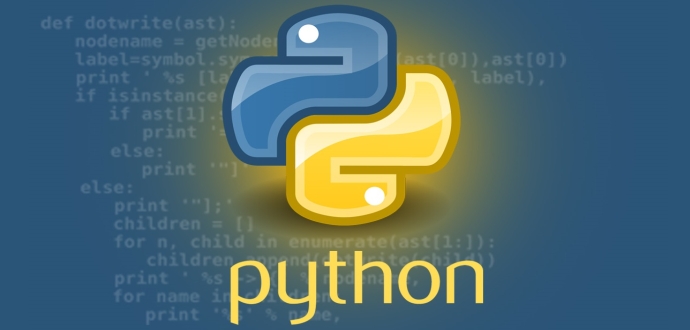What are the course objectives?
The Data Science with Python course will furnish you with in-depth knowledge of the various libraries and packages required to perform data analysis, data visualization, web scraping, machine learning and natural language processing using Python.
Python has surpassed Java as the top language used to introduce US students to programming and computer science, and 46 percent of data science jobs list Python as a required skill.
What skills will you learn?
This Python for Data Science training course will enable you to:
- Gain an in-depth understanding of data science processes, data wrangling, data exploration, data visualization, hypothesis building, and testing. You will also learn the basics of statistics
- Install the required Python environment and other auxiliary tools and libraries
- Understand the essential concepts of Python programming such as data types, tuples, lists, dicts, basic operators and functions
- Perform high-level mathematical computing using the NumPy package and its large library of mathematical functions
- Perform scientific and technical computing using the SciPy package and its sub-packages such as Integrate, Optimize, Statistics, IO and Weave
- Perform data analysis and manipulation using data structures and tools provided in the Pandas package
- Gain expertise in machine learning using the Scikit-Learn package
- Gain an in-depth understanding of supervised learning and unsupervised learning models such as linear regression, logistic regression, clustering, dimensionality reduction, K-NN and pipeline
- Use the Scikit-Learn package for natural language processing
- Use the matplotlib library of Python for data visualization
- Extract useful data from websites by performing web scrapping using Python
- Integrate Python with Hadoop, Spark and MapReduce
Who should take this Python for Data Science course?
There is a booming demand for skilled data scientists across all industries that make this course suited for participants at all levels of experience. We recommend this Data Science with Python training particularly for the following professionals:
- Analytics professionals who want to work with Python
- Software professionals looking to get into the field of analytics
- IT professionals interested in pursuing a career in analytics
- Graduates looking to build a career in analytics and data science
- Experienced professionals who would like to harness data science in their fields
- Anyone with a genuine interest in the field of data science
Prerequisites: There are no prerequisites for this Data Science with Python course. The Python basics course included with this program provides additional coding guidance.
What projects are included in this Python for Data Science certification course?
The course includes four real-world, industry-based projects. Successful evaluation of one of the following projects is a part of the certification eligibility criteria:
Project 1: Products rating prediction for Amazon
Amazon, one of the leading US-based e-commerce companies, recommends products within the same category to customers based on their activity and reviews on other similar products. Amazon would like to improve this recommendation engine by predicting ratings for the non-rated products and add them to recommendations accordingly.
Domain: E-commerce
Project 2: Demand Forecasting for Walmart
Predict accurate sales for 45 stores of Walmart, one of the US-based leading retail stores, considering the impact of promotional markdown events. Check if macroeconomic factors like CPI, unemployment rate, etc. have an impact on sales.
Domain: Retail
Project 3: Improving customer experience for Comcast
Comcast, one of the US-based global telecommunication companies wants to improve customer experience by identifying and acting on problem areas that lower customer satisfaction if any. The company is also looking for key recommendations that can be implemented to deliver the best customer experience.
Domain: Telecom
Project 4: Attrition Analysis for IBM
IBM, one of the leading US-based IT companies, would like to identify the factors that influence attrition of employees. Based on the parameters identified, the company would also like to build a logistics regression model that can help predict if an employee will churn or not.
Domain: Workforce Analytics
Project 5: NYC 311 Service Request Analysis
Perform a service request data analysis of New York City 311 calls. You will focus on data wrangling techniques to understand patterns in the data and visualize the major complaint types.
Domain: Telecommunication
Project 6: MovieLens Dataset Analysis
The GroupLens Research Project is a research group in the Department of Computer Science and Engineering at the University of Minnesota. The researchers of this group are involved in several research projects in the fields of information filtering, collaborative filtering and recommender systems. Here, we ask you to perform an analysis using the Exploratory Data Analysis technique for user datasets.
Domain: Engineering
Project 7: Stock Market Data Analysis
As a part of this project, you will import data using Yahoo data reader from the following companies: Yahoo, Apple, Amazon, Microsoft and Google. You will perform fundamental analytics, including plotting, closing price, plotting stock trade by volume, performing daily return analysis, and using pair plot to show the correlation between all of the stocks.
Domain: Stock Market
Project 8: Titanic Dataset Analysis
On April 15, 1912, the Titanic sank after colliding with an iceberg, killing 1502 out of 2224 passengers and crew. This tragedy shocked the world and led to better safety regulations for ships. Here, we ask you to perform an analysis using the exploratory data analysis technique, in particular applying machine learning tools to predict which passengers survived the tragedy.
Domain: Hazard
